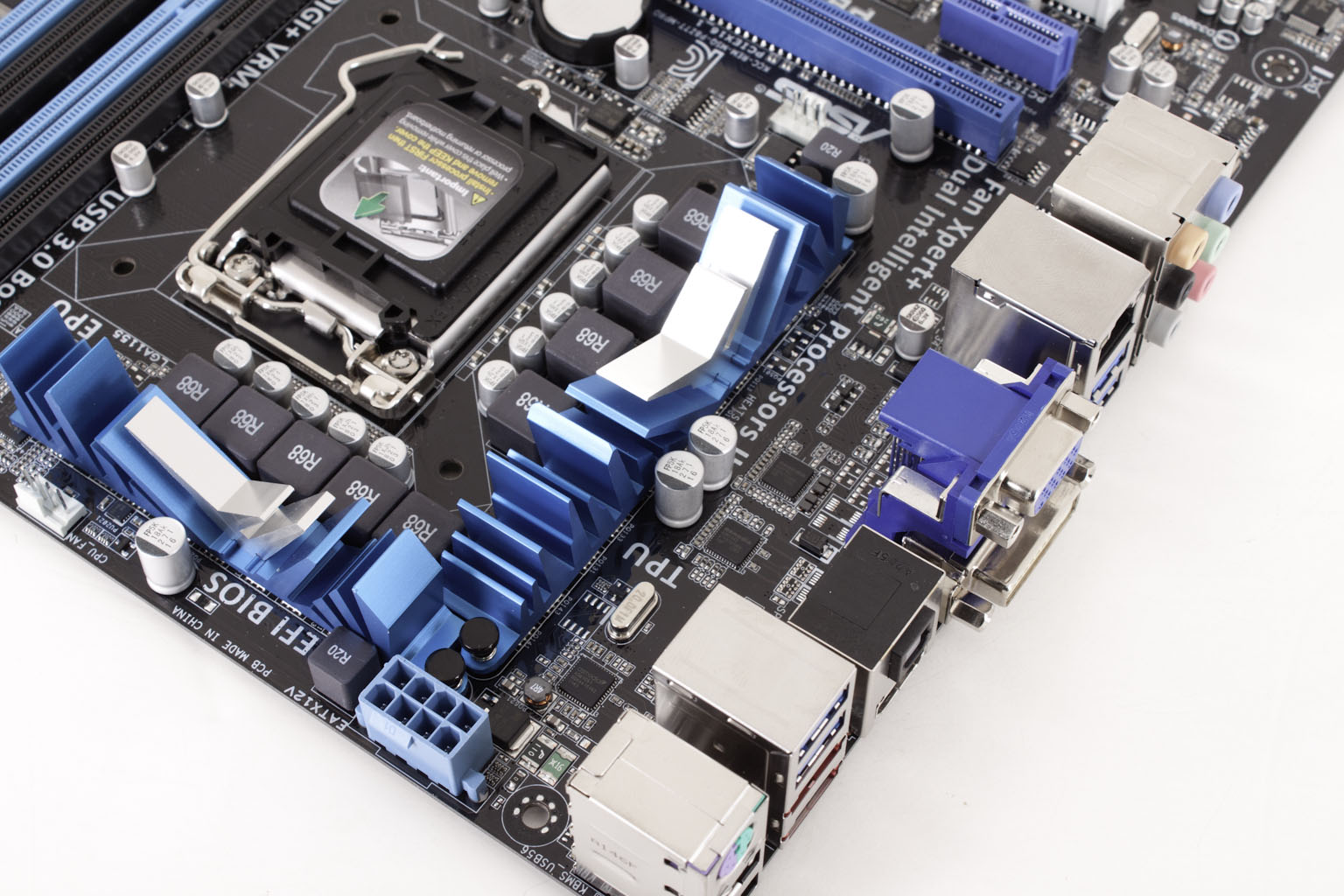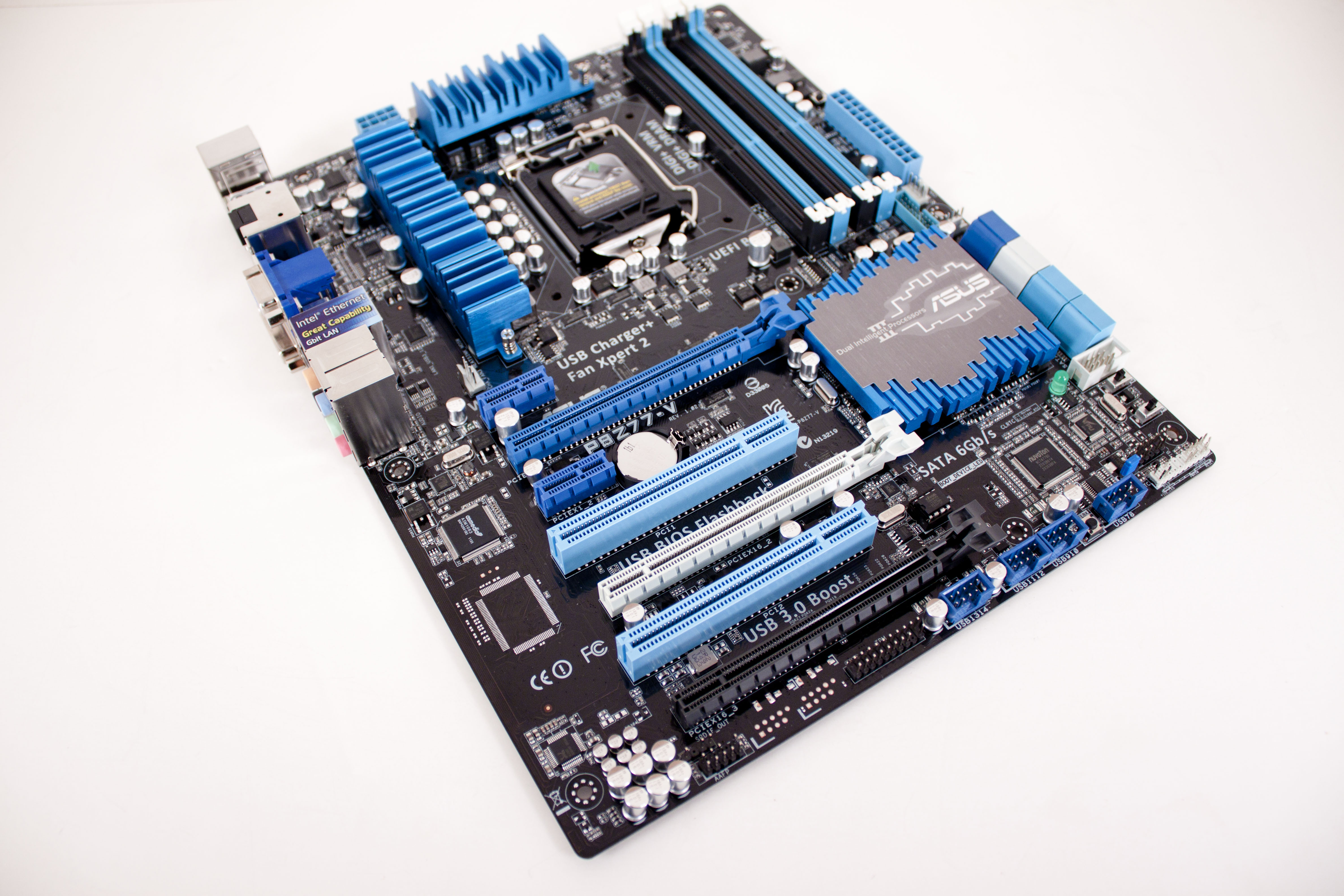Motherboards
 Although the Intel Z77 Express chipset has been available for a while now we chose to wait until the official launch of Ivy Bridge to begin our reviews. After all the Z77 with Panther Point was designed to get the best performance when tied with Ivy Bridge so why not show that off first. To kick off our coverage of the Z77 we deiced to try out Intel’s reference design in the DZ77GA-70K. This performance desktop board from Intel is a great starting point and will give us the feel of how Intel meant things to work. So let’s get to it shall we?
Although the Intel Z77 Express chipset has been available for a while now we chose to wait until the official launch of Ivy Bridge to begin our reviews. After all the Z77 with Panther Point was designed to get the best performance when tied with Ivy Bridge so why not show that off first. To kick off our coverage of the Z77 we deiced to try out Intel’s reference design in the DZ77GA-70K. This performance desktop board from Intel is a great starting point and will give us the feel of how Intel meant things to work. So let’s get to it shall we?
- Details
- By Sean Kalinich
- Hits: 42974
 At almost the opposite end of the spectrum from the Asus Maximus V Gene (in terms of target market) we find the Asus P8Z77-M Pro motherboard. The P8Z77-M Pro is also a micro ATX board and despite being aimed at the lower end of the consumer market it shares some of the same features that the Gene has. You still get Asus’ Digi+ power controls and FanXpert+ along with Asus’ commitment to solid design and component selection. We have talked about most of these items in Part I of our review. Now we are going to focus on the performance you can expect when you pick up the P8Z77-M Pro along with Intel’s new Ivy Bridge CPU.
At almost the opposite end of the spectrum from the Asus Maximus V Gene (in terms of target market) we find the Asus P8Z77-M Pro motherboard. The P8Z77-M Pro is also a micro ATX board and despite being aimed at the lower end of the consumer market it shares some of the same features that the Gene has. You still get Asus’ Digi+ power controls and FanXpert+ along with Asus’ commitment to solid design and component selection. We have talked about most of these items in Part I of our review. Now we are going to focus on the performance you can expect when you pick up the P8Z77-M Pro along with Intel’s new Ivy Bridge CPU.
- Details
- By Sean Kalinich
- Hits: 73714
 After taking a look at a couple of Asus’ MicroATX Z77 boards we are moving up in size to the standard ATX products. Asus has been (as we have told you) working on integrating the same feature set you find in their ROG boards down into their mainstream and even channel boards. This move is also helping them to restructure the feature set at each level and offer the right features to the right market segment. We started off with the gateway product into the ROG line (the Maximus V Gene) and then dropped to the other end of the spectrum with the P8Z77-M Pro. Now we are going to check out the lower end of the mid-range motherboards in the P8Z77-V. This board is a step up from the P8Z77-M Pro in both size and the features that it brings to the table. Let’s take a look shall we?
After taking a look at a couple of Asus’ MicroATX Z77 boards we are moving up in size to the standard ATX products. Asus has been (as we have told you) working on integrating the same feature set you find in their ROG boards down into their mainstream and even channel boards. This move is also helping them to restructure the feature set at each level and offer the right features to the right market segment. We started off with the gateway product into the ROG line (the Maximus V Gene) and then dropped to the other end of the spectrum with the P8Z77-M Pro. Now we are going to check out the lower end of the mid-range motherboards in the P8Z77-V. This board is a step up from the P8Z77-M Pro in both size and the features that it brings to the table. Let’s take a look shall we?
- Details
- By Sean Kalinich
- Hits: 25695
 As we showed you recently we do not just have a single Z77 board from Asus in the lab, but a pretty good range of them. We have a lineup that covers the entry level, the mainstream and even the ROG line (although not the upper end there yet). We have already shown you what you can expect from the Micro ATX Maximus V Gene in terms of features and design so now we want to continue that thread and take a look at another Micro ATX board at the other end of the food chain; the Asus P8Z77-M Pro. So let’s take a few minutes to check out what Asus has in store for you here.
As we showed you recently we do not just have a single Z77 board from Asus in the lab, but a pretty good range of them. We have a lineup that covers the entry level, the mainstream and even the ROG line (although not the upper end there yet). We have already shown you what you can expect from the Micro ATX Maximus V Gene in terms of features and design so now we want to continue that thread and take a look at another Micro ATX board at the other end of the food chain; the Asus P8Z77-M Pro. So let’s take a few minutes to check out what Asus has in store for you here.
- Details
- By Sean Kalinich
- Hits: 54049
 The fourth X79 board we have in the lab is from MSI in the form of the X79A-GD65(8D). This board features the third generation of their Military Class of hardware as well as what MSI calls true Gen 3 PCIe The X79A-GD65(8D) has a price tag under $300 which makes these represents the lowest priced board we have tested so far. Now the question is; does the X79A-GD65(8D) have the same level of quality and performance as its more expensive peers, or will we find out that the old maxim “you get what you pay for” is true. We will take a look at both the performance and the design choices behind the X79A-GD65 and let you know. We will kick things off with the design and features.
The fourth X79 board we have in the lab is from MSI in the form of the X79A-GD65(8D). This board features the third generation of their Military Class of hardware as well as what MSI calls true Gen 3 PCIe The X79A-GD65(8D) has a price tag under $300 which makes these represents the lowest priced board we have tested so far. Now the question is; does the X79A-GD65(8D) have the same level of quality and performance as its more expensive peers, or will we find out that the old maxim “you get what you pay for” is true. We will take a look at both the performance and the design choices behind the X79A-GD65 and let you know. We will kick things off with the design and features.
- Details
- By Sean Kalinich
- Hits: 17748
More Articles …
Page 2 of 4



